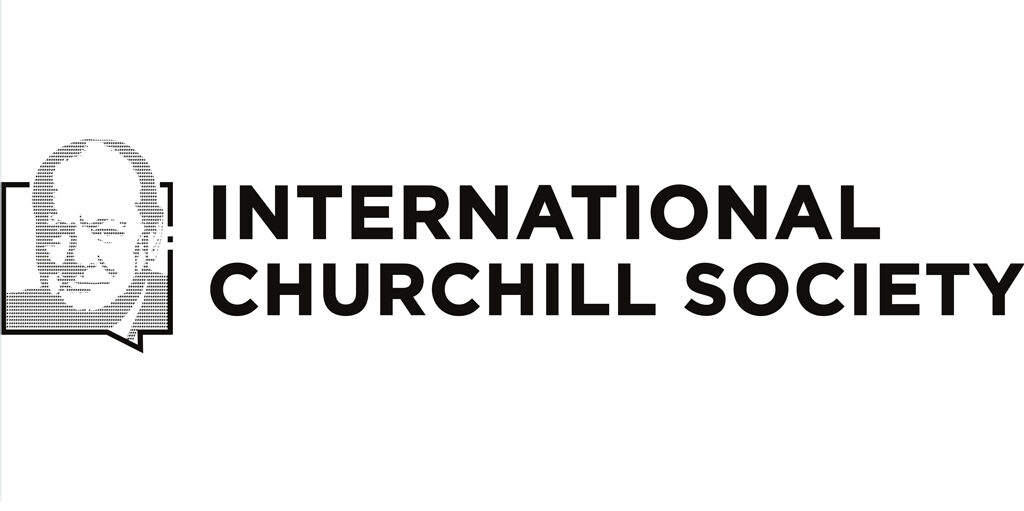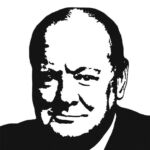
Finest Hour 129
But This One is Utterly Optional

Winston Churchill, Parliament Square, London © Sue Lowry & Magellan PR
August 1, 2013
Finest Hour 129, Winter 2005-06
Page 37
But This One is Utterly Optional
Winston Churchill: His Military Life 1895-1945, by Michael Paterson. David and Charles, 308 pages, £20. Member price $35.

2025 International Churchill Conference
By Paul H. Courtenay
Referring to Churchill’s funeral, the very first word of the introduction to this book is his burial place, “Blandon,” which does not exactly inspire confidence in what is to come. The first disadvantages the reader will notice is the absence of maps, and of references attributing quotations. To be fair, many quotations do state their origin in the text, but this is far from universal; in particular, a number of Churchill’s alleged sayings are given no attribution, thus cannot be verified.
The book is generally accurate in the chronology of Churchill’s career, but consists essentially of a large number of quite lengthy extracts from other peoples’ writings, linked with historical summaries. Where the book scores is with numerous statements by little-known people, such as Harrovian contemporaries, junior officers and others who encountered Churchill at various times, and some of these may not have been widely published before.
One of these writers in Winston Churchill: His Military Life particular stands out: General Sir Hubert Gough, who rose to senior rank in the Great War. He purported to have been an eye-witness of, or otherwise closely involved in, the Malakand Field Force, Spion Kop and the relief of Ladysmith. In all these instances he strongly contradicts Churchill’s writings which, according to Gough, grossly exaggerate the intensity and danger of the operations. (Paterson may not have been aware that Gough was strongly criticised for the performance of his troops in 1917-18 and recalled from Flanders, so he may have had an axe to grind.)
A curious conversation involving Field Marshal Ironside is reported without attribution at about third hand, but so riddled with inconsistencies that the whole topic is unavoidably suspect. As the book moves towards its close, the author seems to be anxious to get it over with as soon as possible, and simple errors multiply. For example, we are told that Churchill caught pneumonia while in North Africa for the Casablanca conference (wrong); that the Nobel Prize was awarded for A History of the English Speaking Peoples (not even published when the prize was given); that Cdr. Tommy Thompson had the greatest influence over Churchill (very wrong); and that the Korean War began in May 1951 (a surprise to those who had already been there for some ten months).
Like many other writers, Paterson is not well informed on matters to do with military uniforms. We are told that, when wearing his Air Commodore’s uniform, WSC wore wings to which he was not entitled! The author is unaware that these were specially awarded by the Air Council (with the King’s approval) on 1 April 1943 to mark the 25th anniversary of the formation of the RAF and WSC’s close involvement with its creation. As a digression, it is worth recording the conclusion of Churchill’s letter of thanks on this occasion: “I am honoured to be accorded a place, albeit out of kindness, in that comradeship of the air which guards the life of our island and carries doom to tyrants, whether they flaunt themselves or burrow deep.”
Perhaps the most common error, which Paterson makes in company with many distinguished historians, is to say that Churchill’s uniform worn at the Rhine Crossing, Berlin and Potsdam (and, incidentally, also at Yalta) was that of Colonel, 4th Queen’s Own Hussars; he was in fact dressed as Hon. Colonel, 4th/5th (Cinque Ports) Battalion, The Royal Sussex Regiment on all these occasions. (See page 12 in this issue. —Ed.)
This book is interesting in revealing the comments of junior individuals whose historical contributions are usually ignored in favour of those in grander positions. But in the broader sense it is not so commendable. Perhaps the best one-word description of the work—despite a thoughtful foreword by Allen Packwood and the paucity of illustrations—is “tabloid.”
Subscribe
WANT MORE?
Get the Churchill Bulletin delivered to your inbox once a month.



